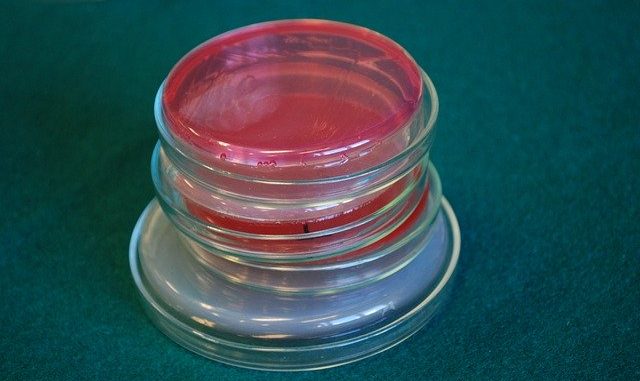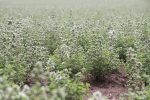
The title is also the scope of an important industrial standard. This is the ‘Measurement of antibacterial activity on plastics and other non-porous surfaces’ and is known to microbiologists as ISO 22196:2011. It has not been superseded and remains the industrial lynchpin for testing the activity of microorganisms on food contact materials for example.
The standard is referenced on the ISO web-site (article).
Products And Surfaces Considered
The type of products tested are plastics, non-porous surfaces such as films and painted surfaces that contain antimicrobial agents. They do not consider light-activated agents which are outside the scope of the standard.
The Test Description
A bacterial suspension is applied to a surface whether it is treated with an antibacterial agent or not. The suspension contains a defined number of microorganisms of a recognised bacterial species or strain and has been quantified.
Typical microorganisms used in this test are bacteria like Staphylococcus aureus, Escherichia coli, Listeria monocytogenes etc. Indeed any bacteria or fungus can be assessed.
An incubation period follows. The efficacy or ability of the antibacterial surface is quantified using calculations defined in the standard. These calculations enable an assessor to make a judgement of the success or otherwise of the contact materials against various criteria defined in the standard.
Validation Of ISO 22196:2011
Third party microbiology testing labs are usually required to provide validation of the efficacy of the food-contact surface. This is to ensure the tests and data are provided without bias. Claims can then be made about the surface on the basis of the information registered with an authorised but independent body.
Issues With The Tests
The methodology suffers from a few drawbacks. One of them is that the actual method does not mimic typical surface contamination situations. Mainly, a dilute inoculum of a single microorganism is used. Very often mixed cultures are the culprit and in considerably higher concentrations.
It is also the case that the surface area must remain wet for at least 24 hours according to the test. Very often microbial solutions just dry onto the surface. The reality is that there is a time limit on the microbial solution in contact with the antimicrobial surface.
The test does allow for modification. Appropriate alterations can be made to improve relevancy. Any modifications have to be made in accordance with all those involved in performing and interpreting the test so that confusion is avoided.
Conclusion
ISO 22196:2011 is best treated as a ‘best-case’ example of a test. It is a secure method for quantifying the antimicrobial activity of a surface. There are virtually no other industrial standards available with the widespread acceptance and understanding. The issues are relatively straightforward to understand and the results allow for further examination and investigation.


Leave a Reply